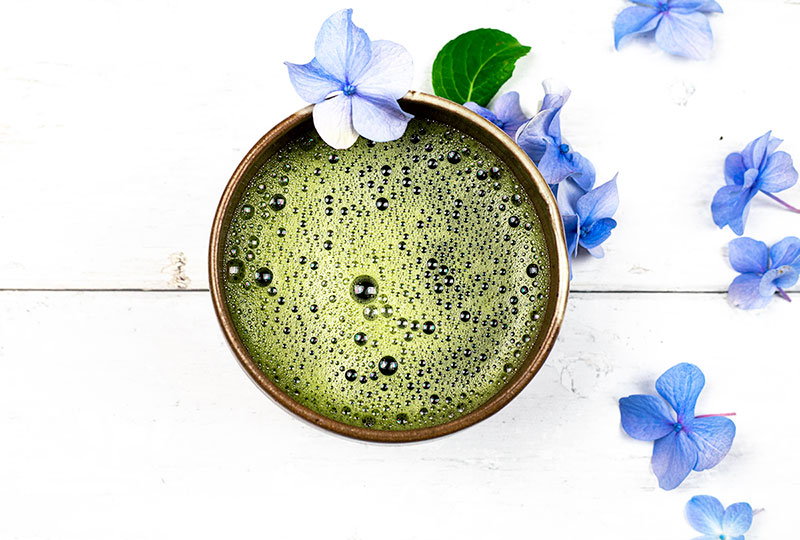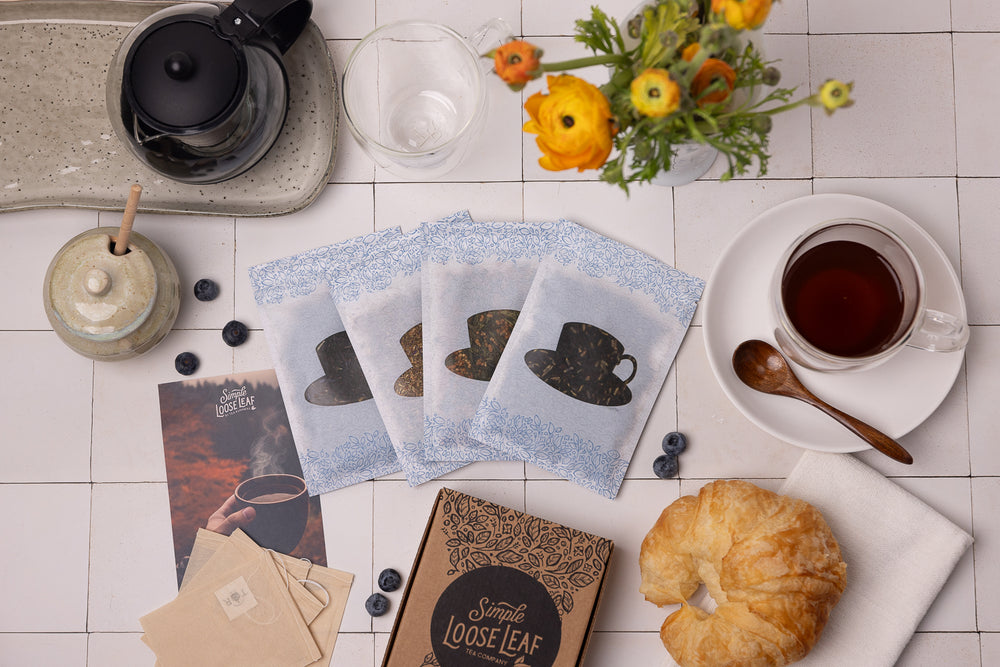Matcha vs Green Tea: Main Differences + How to Choose
This post may contain affiliate links. Simple Loose Leaf is a participant in the Amazon Associates Program, an affiliate advertising program designed to provide a means for sites to earn advertising fees by linking to Amazon.com. Matcha or green tea – which is better? Both green, both with great benefits, and both delicious. What is the difference between matcha tea powder and regular loose leaf green tea?
Difference in Processing
Difference in Flavor
Matcha green tea powder and regular green tea share some similarities in flavor. They may both have some astringency and sweetness. The taste of both will depend on the way you brew it. Hot water will give very bitter green tea.Matcha tea taste
What makes matcha unique is a balance of sweetness, astringency and umami. Umami is a flavor specific to shaded teas – matcha, gyokuro and kabusecha. Matcha can taste sweeter or more bitter, with stronger or weaker umami, vegetal and fresh. It should be green, often vibrant, but never grey or brown.
Matcha tea
Green tea taste
Green tea can have many flavors – from robust, strong and smokey, to vegetal, fresh and grassy. The flavor will depend in many factors. Japanese green teas are usually fresh, lightly sweet, lightly astringent and grassy. Chinese green teas can be light, toasty and sweet, or strong, smokey and malty.Matcha vs Green Tea Brewing
Green tea is brewed, while matcha is prepared. For making a cup of green tea, you steep tea leaves in the water. Steeping will extract flavor, color, catechins, caffeine, L-theanine and other compounds. But with matcha, you drink the whole tea leaf. For making a cup of green tea you will need a teapot or a strainer and a mug or a cup. For making matcha you will need a special bamboo whisk chasen and a matcha bowl or chawan. Matcha is dissolved in water and frothed using a whisk. Green tea is simply steeped by pouring hot water over tea leaves and straining them before serving. Use fresh spring water for making both matcha and regular green tea. Water temperature should not exceed 185°F. Learn how to brew matcha and how to brew loose leaf green tea. Unlike green tea, matcha is never available in tea bags.Matcha vs Green Tea Health Benefits
Both matcha and green tea may offer numerous health benefits. Matcha is sometimes considered healthier than regular green tea because you are ingesting the whole leaf. Studies show it may contain a few times more catechins than green tea. But this will ultimately depend on which tea you are comparing. Not all teas are the same, and it’s not impossible to get more EGCG from regular green teas. Both matcha and green tea contain caffeine, amino acids, chlorophyll and catechins. They may be great for boosting energy, aiding weight loss[1], preventing oxidative damage[2], anticancerogenic properties, reducing inflammation and protecting the teeth[3]. Because of a higher L-theanine content, it may help with reducing stress too[4]. It’s likely that a cup of matcha will contain more caffeine and EGCG than a cup of regular loose leaf tea. This is because matcha is simply dissolved in hot water, rather than steeped. If you want to maximize the potential benefits of regular loose leaf green tea, re-steep it until it loses all flavor. Expect around 30 mg of caffeine per gram of matcha. 2 grams are approximately used for making a bowl of tea. On the other hand, green tea may have on average about 20 mg of caffeine per gram of dry leaf[5]. Depend on the way you brew it, you can have a cup that has around 10 mg of caffeine or more than 60.History of matcha tea and green tea
Green tea was first discovered in China. Legend has it that the Chinese emperor Shen Nong discovered this magical drink when the tea leaf fell into his cup. A few thousands year after, tea became a very important drink across the world.Origins of matcha
Long time ago, tea in China was powdered and compressed, and drank differently than today. Other condiments were added, too. Not until the 12th century did matcha found its way to Japan. It was brought to Japan in the 12th century by a Buddhist monk, Eisai. Japanese mastered the production of matcha and it became the drink of high importance. Today, matcha is served at tea ceremonies, and added to many sweets, desserts and flavors.Origins of green tea
About 800 years ago Chinese invented another method of producing tea – pan-firing. This is still the main method used for making Chinese green tea. The oldest type of green tea is very likely Dragon Well, a delicious and unique pan-fired Chinese green tea that is still one of the best and most popular green teas in the world.How to choose between matcha tea or green tea?
Matcha is a drink for slow enjoyment. It requires patience and skills to make a perfect bowl. On the other hand, green tea may be easier to brew, but it still requires patience. If you want to cook with tea, opt for matcha. You can add it to smoothies, cakes, lattes, frappes, shakes, desserts and even blend it with other teas, for example genmaicha and sencha. IT has a strong flavor that can add freshness and a unique note to desserts. However, matcha may not be the best tea for making large quantities of iced tea. Regular loose leaf green tea is great for that purpose.Disclaimer: This article is for informational purposes only. It’s not intended to replace medical advice, diagnosis or treatment. Every person is different and may react to different herbs and teas differently. Never use teas or herbs to treat serious medical conditions on your own. Always seek professional medical advice before choosing home remedies.




Leave a comment